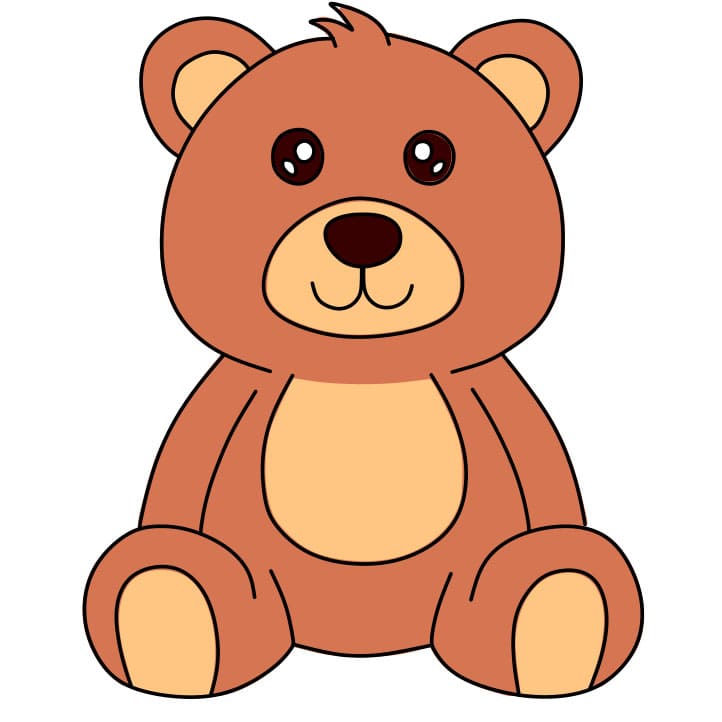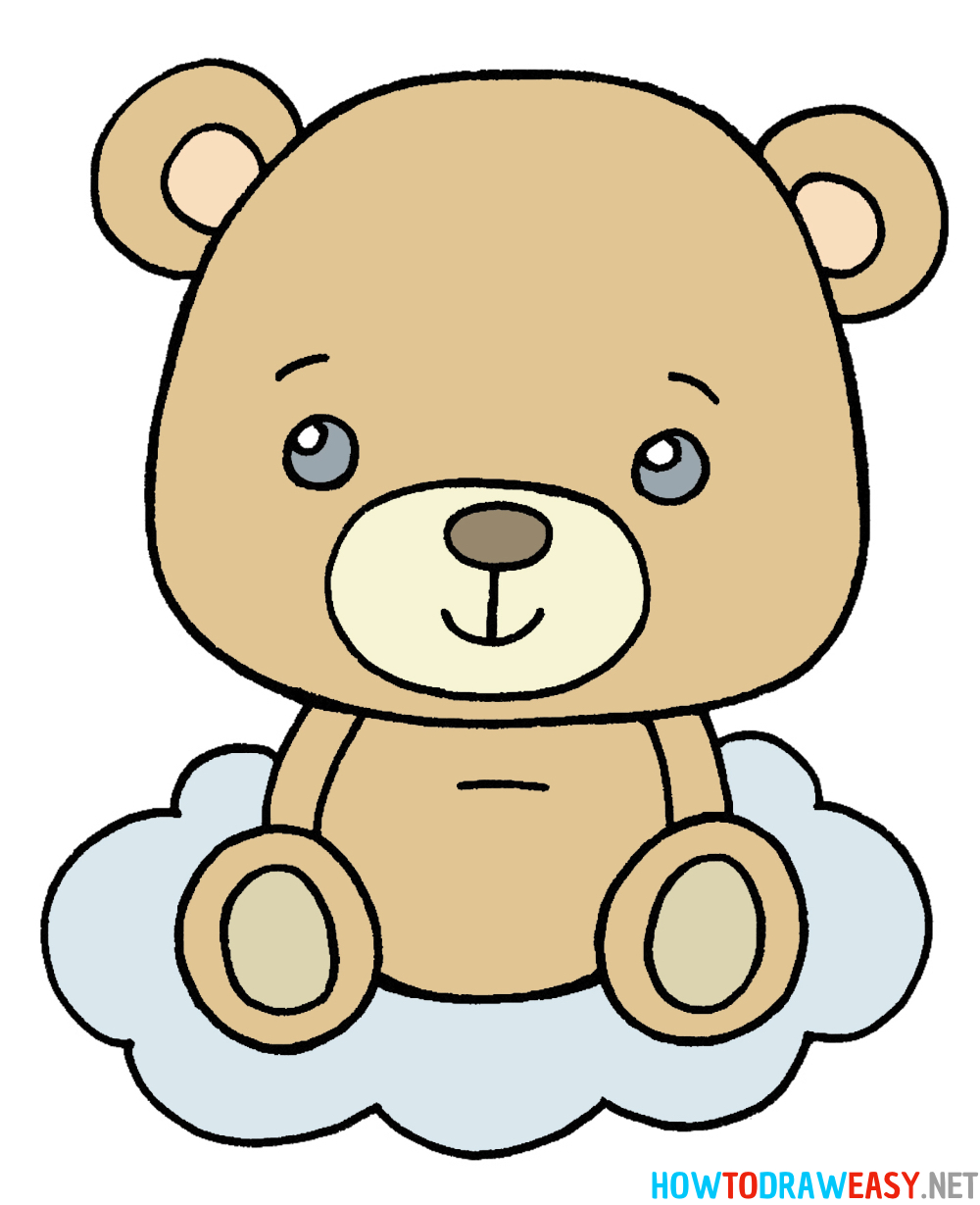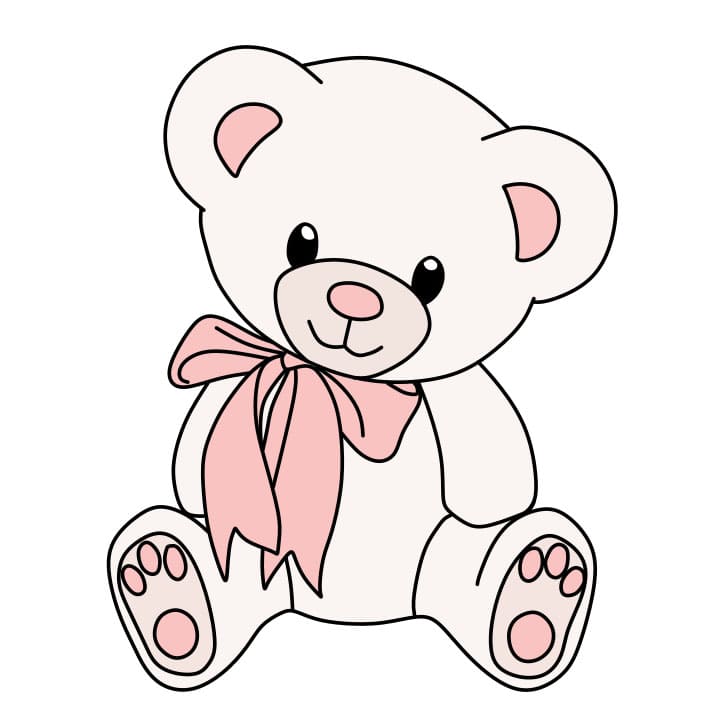Teddy Bear Drawing - Your Guide To Fluffy Friends
There's something truly comforting about a teddy bear, isn't there? These soft, cuddly companions bring a special kind of warmth to our hearts, and learning how to bring them to life on paper can be a rather delightful experience.
Whether you're someone who just started sketching or a more seasoned artist looking for a sweet subject, the simple charm of a stuffed bear makes for a really inviting artistic project. It's about capturing that cozy feeling, that sense of gentle companionship, with just a few lines and shapes. You know, it's pretty satisfying to see them take shape.
So, if you've ever wished you could sketch one of these lovable figures, you're in for a treat. We're going to walk through some wonderfully straightforward ways to create your very own drawn teddy bear, making it look as fluffy and ready for a hug as possible. It's actually a lot simpler than some folks might think.
Table of Contents
- Why Sketch a Teddy Bear?
- What Basic Shapes Help with Teddy Bear Drawing?
- Step-by-Step Teddy Bear Drawing - Getting Started
- Adding Those Sweet Details to Your Teddy Bear Drawing
- How Can You Make Your Teddy Bear Drawing Look Fluffy?
- Exploring Different Styles of Teddy Bear Drawing
- Are There Easy Ways to Practice Your Teddy Bear Drawing?
- What Makes a Teddy Bear Drawing Truly Huggable?
Why Sketch a Teddy Bear?
There’s a certain magic to teddy bears, isn't there? They've been a source of comfort and happiness for so many people over the years. When you sketch one, you're not just putting lines on paper; you're kind of bringing that warm, fuzzy feeling to life. It's a subject that tends to be quite forgiving, which is a nice thing for anyone picking up a pencil. You see, these stuffed friends come in all sorts of looks, from the classic, old-fashioned kind to those with a bit more of a playful, cartoon feel, and even some that seem to belong in a storybook. This means your teddy bear drawing can really take on any personality you wish.
A simple teddy bear drawing, in its essence, captures something truly heartwarming. It’s a subject that speaks to a feeling of security and a bit of childhood wonder. You can make them look happy, sleepy, or just calmly sitting there, and each version holds a special charm. For folks who are just starting out with art, or even those who have been drawing for a while, a teddy bear provides a wonderful chance to practice basic shapes and shading without feeling too much pressure. It's a rather gentle way to get those creative juices flowing, and honestly, who doesn't smile a little when they see a well-drawn teddy bear?
What Basic Shapes Help with Teddy Bear Drawing?
When you begin a teddy bear drawing, thinking about simple shapes is like having a secret helper. You don't need to start with intricate details right away. Instead, picture your teddy bear as a collection of basic forms. A circle, for instance, works perfectly for the head. Then, for the body, you might use a slightly elongated oval or a shape that’s a bit narrower at the top and widens a little towards the bottom. It's kind of like building with blocks, but with your pencil.
The limbs, too, can start as simple ovals or cylindrical shapes. These basic forms are your framework, your skeleton, if you will. They give your teddy bear drawing its overall stance and size before you add any fluff or features. By getting these simple shapes down first, you make sure your bear looks balanced and has the right proportions. It’s a really helpful way to approach any drawing, but it works especially well for something as friendly and round as a teddy bear. So, just focus on those big, simple shapes, and the rest will follow, more or less.
Step-by-Step Teddy Bear Drawing - Getting Started
Now, let's get into the actual process of making your teddy bear drawing. It’s pretty straightforward, honestly. We'll begin with the head, which, as we talked about, is just a simple circle. You can sketch this lightly in the middle of your paper. Don't press too hard, as these are just guide lines that you might adjust later. This circle gives you the main area for your bear's face and where the ears will sit. It's the starting point for everything that comes next, so getting this basic shape down is quite important.
Next, we move to the body. Below your head circle, draw another shape for the body. This could be a larger oval or, as mentioned, a shape that's a bit narrower at the top where it joins the head and then widens a little as it goes down. Think about how a stuffed bear sits; their body is often a bit plump and round. You'll want to connect the head and body with a gentle curve, making it look like the neck. It's not a long neck, just a short connection. This connection helps your teddy bear drawing feel like one complete, cuddly figure. Just keep your lines light for now, because you might want to make small changes.
After you have the head and body in place, you can start thinking about the limbs. For the arms and legs, you can sketch out simple, elongated oval shapes coming from the body. The arms might extend out a little, as if ready for a hug, or perhaps resting on the bear's lap. The legs can be drawn as if the bear is sitting, with rounded shapes for the feet. Think about the overall pose you want for your teddy bear drawing. Are they sitting up straight? Leaning a little? These initial shapes are all about getting the general form and pose right before you add any of the smaller, more refined bits. It's kind of like setting up the stage for your bear.
Adding Those Sweet Details to Your Teddy Bear Drawing
Once you have the main body and head of your teddy bear drawing sketched out, it's time for those sweet little touches that really bring it to life. The ears are a good next step. On top of the head circle, you can add two smaller, rounded shapes for the ears. Think about where a bear's ears usually sit, slightly to the sides and a bit above the middle of the head. You can make them round or a little more oval, depending on the kind of bear you want to draw. These small additions really start to make your circle look like a bear's head, which is rather satisfying to see.
For the face, a smaller oval or a rounded rectangle shape in the lower middle of the head circle can serve as the muzzle. This is where the nose and mouth will go. Inside this muzzle shape, you can draw a simple inverted triangle for the nose. Below the nose, a gentle curved line can become the mouth, perhaps turning up a little at the ends to give your teddy bear drawing a happy expression. For the eyes, two small circles or dots placed above the muzzle can work. Think about spacing them out a little to give your bear a friendly, open look. These facial features, even though they are small, are very important for giving your bear character. It’s almost like giving them a personality.
Finally, you can add some details to the limbs. For the paws, you might draw a few curved lines to suggest fingers or toes, or simply add a rounded shape for the paw pad. If your teddy bear drawing is sitting, you could hint at some folds where the limbs bend, giving it a bit more realism. You can also add a little belly button or a patch of fur on the chest. These little elements, while seemingly minor, contribute a lot to the overall charm and "huggable" quality of your teddy bear drawing. It's about giving them those familiar, comforting characteristics that we associate with stuffed bears. You know, just those small things can make a big difference.
How Can You Make Your Teddy Bear Drawing Look Fluffy?
Making your teddy bear drawing look truly fluffy is all about how you use your lines and shading. Instead of drawing one continuous, smooth outline, think about using many short, slightly wavy strokes around the edges of your bear. This technique, often called "scumbling" or "fuzzy lines," mimics the texture of fur. It gives the impression that the bear is covered in soft, individual strands rather than having a perfectly smooth surface. It's kind of like drawing a cloud, but with more structure. You can also vary the length and direction of these strokes a little to show where the fur might be longer or shorter, like around the ears or muzzle. This approach really helps to make your teddy bear drawing feel soft to the eye.
Shading plays a big part too. To make your teddy bear drawing appear plump and round, you'll want to add gentle shadows. Think about where light would hit your bear and where it would fall into shadow. Typically, areas that curve away from the light, like under the chin, along the sides of the body, or where limbs meet the torso, will be darker. Use a soft pencil to build up these shadows gradually, using circular motions or very light, feathery strokes that follow the form of the bear. This helps create a sense of depth and makes your bear look like it has volume, not just a flat outline. It’s about making it seem like you could almost reach out and touch it, you know?
To really bring out the fluffiness, you can also add some subtle texture within the body of your teddy bear drawing. This doesn't mean drawing every single strand of fur, but rather using very light, short, squiggly lines in random patterns across the bear's surface. These lines should be much lighter than your outlines and shadows. They just hint at the varied direction of fur. You might also use a kneaded eraser to lift a few highlights in areas where the fur would catch the light, making it look even softer and more dimensional. It's a bit like adding tiny, almost invisible details that make a big impact on how fluffy your teddy bear drawing seems. This kind of work, very often, makes the bear feel more real.
Exploring Different Styles of Teddy Bear Drawing
The beauty of a teddy bear drawing is that it can take on so many different personalities, depending on the style you choose. For example, a cartoon teddy bear drawing often has exaggerated features. Think big, round eyes that sparkle, a tiny nose, and a wide, friendly smile. The lines are usually simpler, cleaner, and the overall shape might be more simplified and rounded, giving it a very cheerful and playful feel. Colors in a cartoon style are often bright and solid, adding to that lighthearted mood. It's a great way to capture a sense of childlike innocence, basically.
On the other hand, if you're aiming for a realistic teddy bear drawing, you'll pay more attention to the subtleties. This means focusing on the texture of the fur, the way light and shadow play across its form, and the little details like seams or worn patches. You might use more varied line weights and a wider range of shading to show the contours of the bear's body. The eyes might have more depth, with reflections and subtle color changes. A realistic approach tries to make your teddy bear drawing look as much like an actual stuffed animal as possible, giving it a tangible presence. It tends to be a bit more challenging, but also very rewarding.
Then there's the traditional stuffed bear look, which is kind of a blend. These teddy bear drawings often capture the charm of older, well-loved bears. They might have a slightly lumpy appearance, perhaps a button for an eye, or a stitched nose. The fur texture might be suggested with gentle, soft lines rather than detailed individual strands. This style often evokes a sense of nostalgia and comfort, like a bear that has been cherished for many years. It's about capturing that worn, beloved quality. So, you have a lot of options for your teddy bear drawing, and each one tells a different story, which is pretty neat.
Are There Easy Ways to Practice Your Teddy Bear Drawing?
Practicing your teddy bear drawing doesn't have to be a big, formal affair; there are some pretty easy ways to get better. One simple method is to just start with basic outlines. Don't worry about shading or details at first. Just sketch circles for the head and body, then add the limbs and ears as simple shapes. This helps you get a feel for proportions and how the different parts fit together without getting bogged down by the smaller elements. You can do many of these quick outline sketches in a short amount of time, which is actually a very good way to build confidence.
Another helpful way to practice is by looking at other teddy bear drawings or even real stuffed bears and trying to copy them. You're not trying to make an exact duplicate, but rather to understand how other artists or the real objects are constructed. Pay attention to how they've handled the curves, the way the limbs connect, and the placement of the features. This can give you ideas for your own teddy bear drawing and help you see shapes you might not have noticed before. It's kind of like learning by example, you know?
Also, don't underestimate the power of quick sketches. Take just a few minutes each day to draw a teddy bear, even if it's just a rough sketch. The more often you put pencil to paper, the more comfortable and natural the process becomes. You might find yourself experimenting with different poses or expressions without even trying. It's about building muscle memory and training your eye to see the forms. You could even keep a small sketchbook handy and draw a teddy bear whenever you have a few spare moments. This consistent, low-pressure practice is, in some respects, one of the best ways to improve your teddy bear drawing skills over time.
What Makes a Teddy Bear Drawing Truly Huggable?
To make a teddy bear drawing truly feel like it could be picked up and given a squeeze, there are a few things you can focus on. Expressing emotion through the eyes and posture is a big one. Even simple dots for eyes can convey a lot if they are placed just right. A slight tilt of the head or a gentle curve in the body can make your bear seem more approachable and friendly. If the arms are slightly open, it gives the impression of a welcoming gesture. It's about giving your bear a kind of gentle, inviting presence, which is really quite important.
The softness of your lines and shading also plays a key role. Avoid harsh, sharp lines, especially for the outlines. Instead, use those feathery, broken lines we talked about to suggest the softness of fur. When shading, blend your pencil strokes smoothly so there are no abrupt changes in tone. This creates a gentle transition from light to dark, making your teddy bear drawing look round and plush. A soft, diffused shadow beneath the bear can also make it seem like it's resting gently, adding to that comforting feel. You want it to look like it's made of something truly soft, almost like velvet, more or less.
Finally, a sense of gentle roundness and plumpness really helps. Teddy bears are, after all, stuffed animals, so they should look a bit squishy and full. Emphasize the rounded forms of the head, belly, and limbs. You might even add a few very subtle creases or wrinkles in the fur where the bear might bend or where its stuffing is particularly full. Adding little touches, like a simple ribbon around its neck or a tiny stitched patch, can also give your teddy bear drawing a personal, well-loved quality that makes it seem even more ready for a hug. These small details, you know, can make all the difference in making your bear feel truly endearing.
So, we’ve gone over how to begin your teddy bear drawing with simple shapes, how to add those charming details, and even ways to make your bear look wonderfully fluffy. We also touched on different artistic styles you could try and some straightforward ways to practice. It's all about enjoying the process of bringing these comforting figures to life on paper, creating something that feels soft and inviting.

Step 1

How to Draw a Teddy Bear - Draw for Kids

How-to-draw-a-teddy-bear-Step-8-7